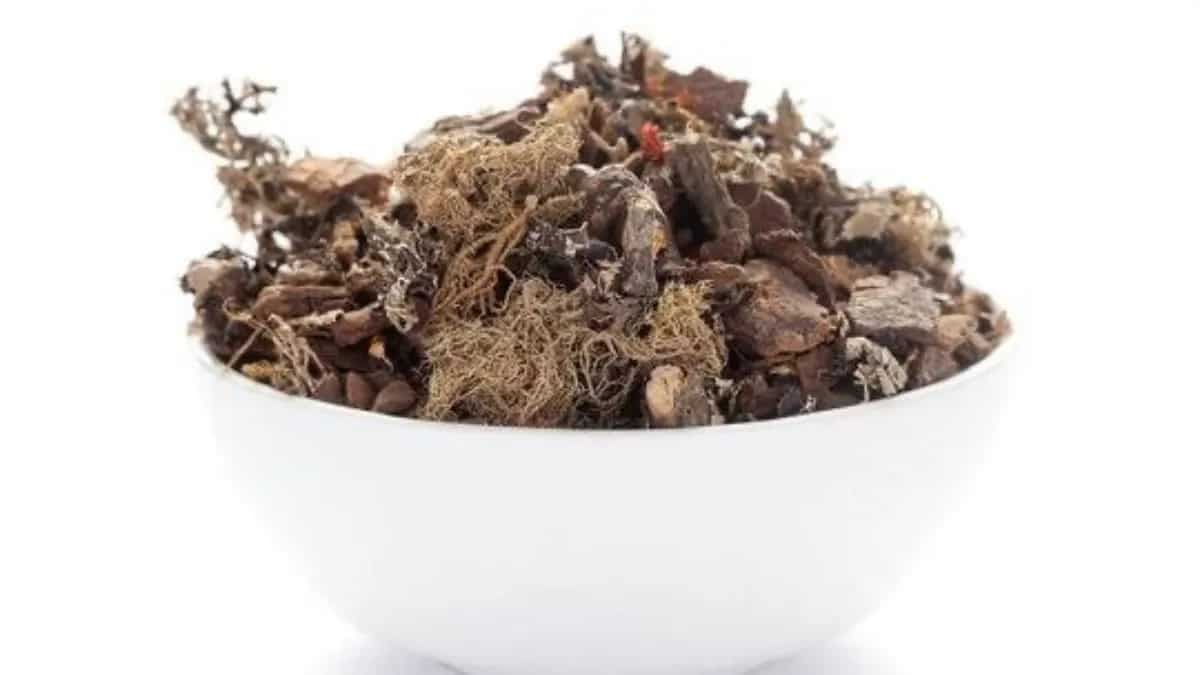Stone flower is a type of dried lichen that grows naturally on rocks and tree bark in moist regions. It is collected and dried before being used in spice blends and gravies across India. At first glance it may not look like a culinary ingredient, as the dried pieces appear dark, flaky, and almost brittle. Yet once it meets hot oil or ghee, it releases an aroma that is hard to mistake, filling the dish with a woody and smoky undertone. For centuries, cooks in India have valued dagad phool for its depth of flavour, even if it rarely appears as a star ingredient in recipes. Its story is tied closely to India’s regional cuisines and the spice trade, and understanding its significance adds a new dimension to the way one sees everyday food.

History And Cultural Significance
Stone flower has been mentioned in culinary references dating back to medieval India, where it was valued in spice markets along with black cardamom, cloves, and mace. It reached Indian kitchens through trade routes that carried spices, herbs, and rare condiments from the Deccan plateau and the Western Ghats to the rest of the subcontinent. The lichen was considered precious because it could preserve its strong aroma for a long time when stored correctly. In certain regions, it became a marker of festive or celebratory cooking, especially in Mughlai and Hyderabadi dishes where layered flavours mattered. Over time, its use spread into household cooking, particularly in areas of Maharashtra, Karnataka, and Andhra Pradesh. Even today, it is a key part of many traditional spice blends, showing how older culinary practices have shaped what people still eat.

Culinary Applications
Dagad phool is rarely used on its own. Its true strength lies in its ability to work with other spices and round off sharp edges in a masala. When added to oil at the start of cooking, it lends a strong aroma that sets the base for rich curries. This is why it is commonly included in garam masala recipes prepared in South India and the Deccan region. In Hyderabadi biryani, for instance, it is often used in the masala paste to add depth to the layers of rice and meat. In Maharashtrian goda masala, it balances sweetness from coconut and sesame with an earthy tone. Even in Chettinad cooking from Tamil Nadu, dagad phool features in masala mixes that define the region’s fiery gravies. Outside these traditions, it also appears in certain pickles and slow-cooked stews, though in small quantities. The spice has a strong flavour, so only a few flakes are needed to change the character of a dish.

Recipe Ideas
For those looking to use stone flower at home, the simplest way is to prepare a spice blend. A homemade garam masala can include a few pieces of dagad phool along with cinnamon, cloves, cardamom, and pepper. Adding this blend to everyday dal or sabzi can create a restaurant-style aroma without much effort. Another idea is to grind a little stone flower with ginger, garlic, and chillies to make a paste for marinating chicken or mutton before cooking. It works particularly well in slow-cooked curries where the flavours have time to develop. Vegetarian dishes like mushroom masala or brinjal curry also take on a new character with the addition of this spice. For rice lovers, adding it into masala powders for pulav or biryani is another way to make the dish more layered. Even a simple curry can feel special with just a pinch of dagad phool in the tempering.

Health Benefits
Traditional Ayurvedic texts and folk practices mention several benefits of dagad phool. Being a lichen, it contains natural compounds with antimicrobial and anti-inflammatory properties. In older households it was sometimes added to food as a digestive aid, since its earthy bitterness was thought to stimulate appetite and support gut health. It was also valued for its cooling effect on the body in hot climates. Modern research on lichens shows that they contain unique bioactive compounds, though detailed studies on dagad phool in particular remain limited. What is known is that when used in moderate amounts as part of a balanced diet, it adds aroma without adding calories or fat, which makes it an easy way to build flavour without relying on heavy ingredients. This makes it not only culturally important but also nutritionally useful in everyday meals.

Practical Considerations In Cooking
While dagad phool has many benefits, it is important to understand how to handle it properly in the kitchen. The spice is very light and brittle, so it is best stored in an airtight container away from moisture. It should always be tempered in oil or ghee, as dry roasting alone does not bring out its full character. Because its flavour is quite strong, using too much can overpower a dish, so cooks often use just a small flake or two for an entire pot of curry. When making masala powders, it is usually ground along with other spices, which helps distribute its flavour evenly. Many home cooks may not recognise it in markets because of its unusual appearance, but once familiar with its aroma, it becomes easier to identify. Keeping even a small amount at home can transform routine cooking into something more aromatic and layered.


